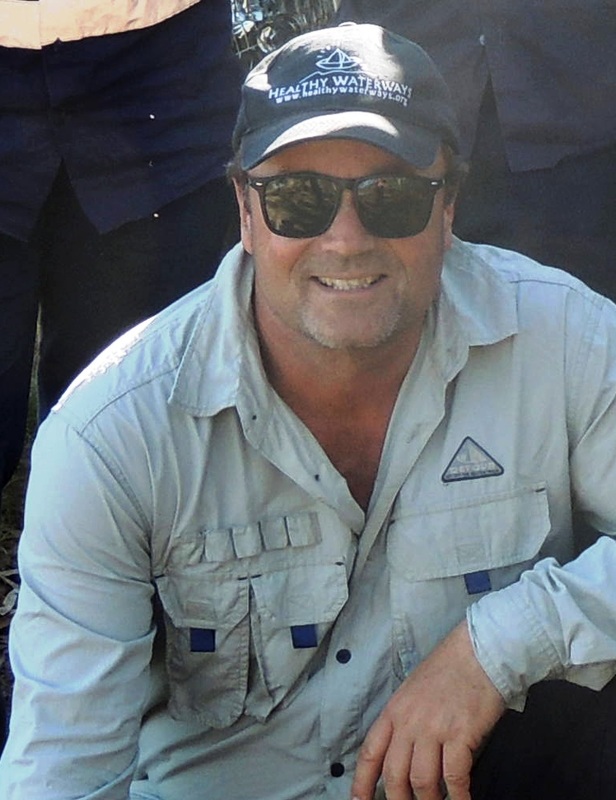In early 2012, a series of bushfires impacted the western side of the Redcliffe Peninsula including Hays Inlet, the Chelsea Street Reserve, and the Bremner Road rehabilitation area. In particular the Melaleuca forest (normally capable of handling fires) suffered a lot of damage in the Silcock Street Reserve with many of the hardy trees killed by the intense heat. The incident led to the formulation of a plan by the Redcliffe Environmental Forum (REF) and the Moreton Bay Regional Council (MBRC) to protect the area from future intense bushfires. Apart from replanting endemic trees one of the main strategies used to rehabilitate the area is through an intense weeding program. Many weeds in the area are not adapted to fire and in fact burn at a much higher temperature than endemic vegetation. Its this higher temperature fire that kills the Melaleuca.
Another method of managing fire in these areas can be delivered via mosaic burning. This controlled burning can lower the fire load in the area and lessen the impact of bushfires, reduce the threat to life and assets. If applied correctly, this method can lead to the creation of a more complex and biodiverse habitat and provide a greater range of habitats for many local plants and animals. The Moreton Bay Regional Council has a planned fire reduction program and recently they implemented a fire reduction program at the Chelsea Street Reserve.
Recently council staff including De-Anne Attard from the Environmental team along with Bruce Bunkum the Principal Fire Management Officer for the MBRC provided a tour and de-brief regarding the controlled burn at the Chelsea Street Reserve. We learnt from them the following facts:
From a conservationist’s point of view, the remaining coastal forest and wetland areas provide a refuge form many species of flora and fauna including the Koala. The ongoing efforts of the MBRC staff along with the volunteers from many environmental groups including REF and the Bribie Island Environmental Protection Association (BIEPA) as well as our local Bushcare groups is crucial to maintain the regions natural assets. The chance to spend some time with De-Anne Attard and Bruce Bunkum was greatly appreciated.
Another method of managing fire in these areas can be delivered via mosaic burning. This controlled burning can lower the fire load in the area and lessen the impact of bushfires, reduce the threat to life and assets. If applied correctly, this method can lead to the creation of a more complex and biodiverse habitat and provide a greater range of habitats for many local plants and animals. The Moreton Bay Regional Council has a planned fire reduction program and recently they implemented a fire reduction program at the Chelsea Street Reserve.
Recently council staff including De-Anne Attard from the Environmental team along with Bruce Bunkum the Principal Fire Management Officer for the MBRC provided a tour and de-brief regarding the controlled burn at the Chelsea Street Reserve. We learnt from them the following facts:
- Planned burns, also known as hazard reduction or prescribed burns, are undertaken during low risk periods.
- Before a burn takes place, an ecological assessment of each site is carried out to determine the environmental values that require protecting, such as hollows, nests, dens, and significant species. Another factor taken into account is the soil moisture level
- As the burns are spot ignited and burn slowly at low intensity, these values can be protected from fire by raking and/or wetting around them.
- Within this fire management program, members of the MBRC Environment team work to ensure that the Bushcare areas and the Reserve is managed to Council’s Standard Environmental Conditions. This method promotes native regeneration and provides a patchy mosaic to enhance habitat for wildlife whilst ensuring retreat sites are maintained during the burn.
- During the spot burning, there is also a fauna spotter with the team to ensure the safety of local wildlife including koalas, arboreal animals and lizards and snake often associated with the ground cover.
- The mosaic is likely to benefit biodiversity by creating a range of vegetation age-classes that suit different species. This is achieved by leaving patches of unburnt vegetation that can act as an animal refuge after fire, and by reducing the risk and impact of uniform, large-scale fires.
From a conservationist’s point of view, the remaining coastal forest and wetland areas provide a refuge form many species of flora and fauna including the Koala. The ongoing efforts of the MBRC staff along with the volunteers from many environmental groups including REF and the Bribie Island Environmental Protection Association (BIEPA) as well as our local Bushcare groups is crucial to maintain the regions natural assets. The chance to spend some time with De-Anne Attard and Bruce Bunkum was greatly appreciated.
Further reading:
MBRC: Planned burns - Moreton Bay Regional Council
DES: Planned Burns Guidelines: South East Queensland Planned Burn Guideline (des.qld.gov.au)
MBRC: Planned burns - Moreton Bay Regional Council
DES: Planned Burns Guidelines: South East Queensland Planned Burn Guideline (des.qld.gov.au)

 RSS Feed
RSS Feed
